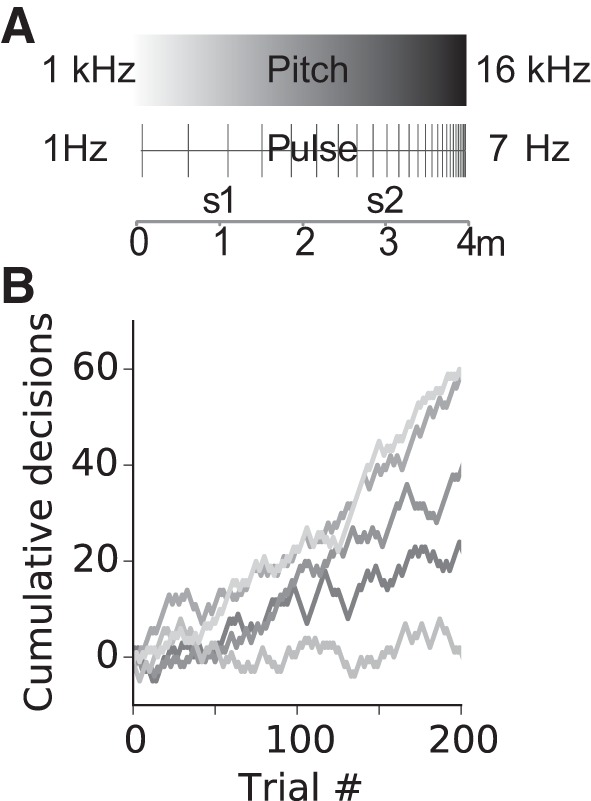Fig. 7.

Navigation with acoustic cues. A: schematics of acoustic signal characteristics as they changed along a 4-m virtual corridor. In different experiments, either a frequency gradient or a pulse rate gradient was used. Trials commenced at the 1- or 3-m corridor location (s1 and s2). The visible virtual corridor was seemingly endless and absent visual cues indicating position. Positional information was contained in the frequency or pulse rate of the acoustic signal. From its starting location, the animal was required to move to the end of the closest corridor to obtain a reward. B: performance during pulse trials shown as cumulative correct (+1) or incorrect (−1) decisions for n = 5 animals. Line segments with positive slopes indicate phases with predominantly correct choices. Data are 50-trial moving averages. The four loudspeakers presented acoustic signals all with the same output.
